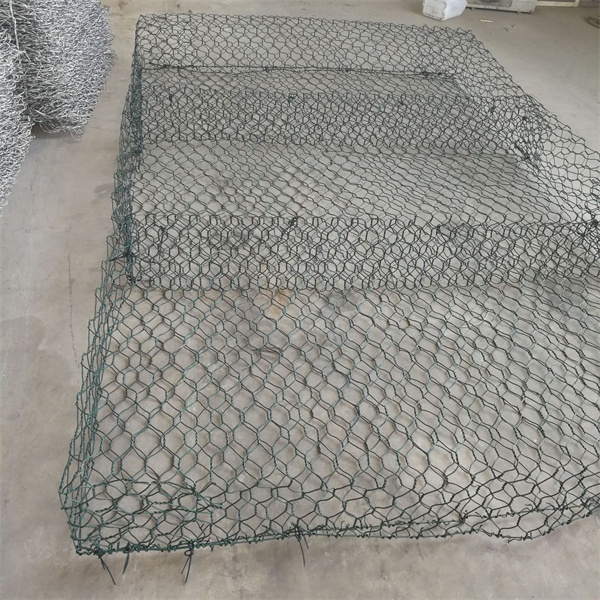Aug . 06, 2024 10:45 Back to list
Exploring the Advantages of High-Quality Oyster Gabions for Coastal Protection and Habitat Restoration
The Aesthetic and Functional Appeal of High-Quality Oyster Gabions
In recent years, the application of gabions—wire mesh containers filled with rocks, concrete, or other materials—has gained significant traction in various fields, including landscape architecture, civil engineering, and environmentally-focused projects. Among these innovations, high-quality oyster gabions stand out as a compelling solution for both aesthetic enhancement and environmental restoration.
Understanding Oyster Gabions
Oyster gabions are specifically designed to support the cultivation and propagation of oysters in marine environments. These structures leverage the natural qualities of the oyster's filtration abilities, creating a symbiotic relationship between the habitat and its inhabitants. When strategically placed in coastal waters, oyster gabions serve multiple purposes they not only provide a stable substrate for oyster larvae to settle and grow but also help protect shorelines from erosion, improve water quality, and enhance biodiversity.
Environmental Benefits
The use of high-quality oyster gabions offers unprecedented environmental benefits. One of the most significant advantages is their role in habitat restoration. Coastal ecosystems often suffer from habitat degradation due to pollution, overfishing, and coastal development. Oyster reefs, which were once abundant, have significantly declined. By utilizing oyster gabions, we can rebuild these vital ecosystems. The mesh of the gabions allows water to circulate freely, creating favorable conditions for oyster larvae to thrive while simultaneously attracting other marine life, such as fish, crabs, and various invertebrates.
Moreover, oysters act as natural filters, improving water clarity and quality by removing impurities and excess nutrients. This filtration process helps combat issues like algal blooms, which can harm aquatic life and disrupt local fishing industries. The installation of oyster gabions thus not only aids in restoring the oyster population but also contributes to the overall health of coastal waters.
high quality oyster gabion

Aesthetic Value
Beyond their environmental advantages, high-quality oyster gabions possess unique aesthetic qualities. When placed in coastal areas, these structures can be designed to harmonize with the surrounding landscape. The natural materials can blend seamlessly into the environment, creating visually appealing installations that enhance the beauty of shorelines.
Landscape architects and coastal designers increasingly embrace gabion structures as functional art. By their very nature, gabions can be customized in terms of shape, size, and the materials used for infilling, allowing for artistic versatility. Coastal parks, walkways, and recreational areas can incorporate oyster gabions not only for ecological purposes but also as decorative elements, promoting a deeper connection between nature and community.
Economic Impact
The deployment of oyster gabions can also provide economic advantages. Healthier oyster populations can boost local fisheries and aquaculture, leading to increased seafood production and revenue for coastal communities. Moreover, the protective capabilities of gabions against coastal erosion can save municipalities and property owners significant costs associated with shoreline maintenance and disaster recovery.
Conclusion
High-quality oyster gabions represent an innovative convergence of environmental science and design. Their multifaceted benefits—ranging from ecosystem restoration and water quality improvement to aesthetic appeal and economic viability—underscore their importance in contemporary practices aimed at sustainable coastal management. As we continue to prioritize ecological balance and resilience in our coastal regions, oyster gabions stand as a testament to the harmony between human ingenuity and nature’s bounty. Embracing such solutions can pave the way for healthier ecosystems and vibrant communities along our shorelines.
-
hesco-gabion-baskets-for-coastal-erosion-prevention
NewsAug.22,2025
-
longevity-and-durability-of-river-rock-gabion-walls
NewsAug.22,2025
-
how-to-integrate-gabion-3d-walls-in-urban-planning
NewsAug.22,2025
-
reno-mattress-gabion-applications-in-civil-engineering
NewsAug.22,2025
-
how-to-install-wire-mesh-for-gabion-baskets-properly
NewsAug.22,2025
-
best-materials-for-filling-a-chain-link-gabion
NewsAug.22,2025
-
Wire Mesh Thickness Impact on Gabion Wall Load Bearing
NewsAug.12,2025






